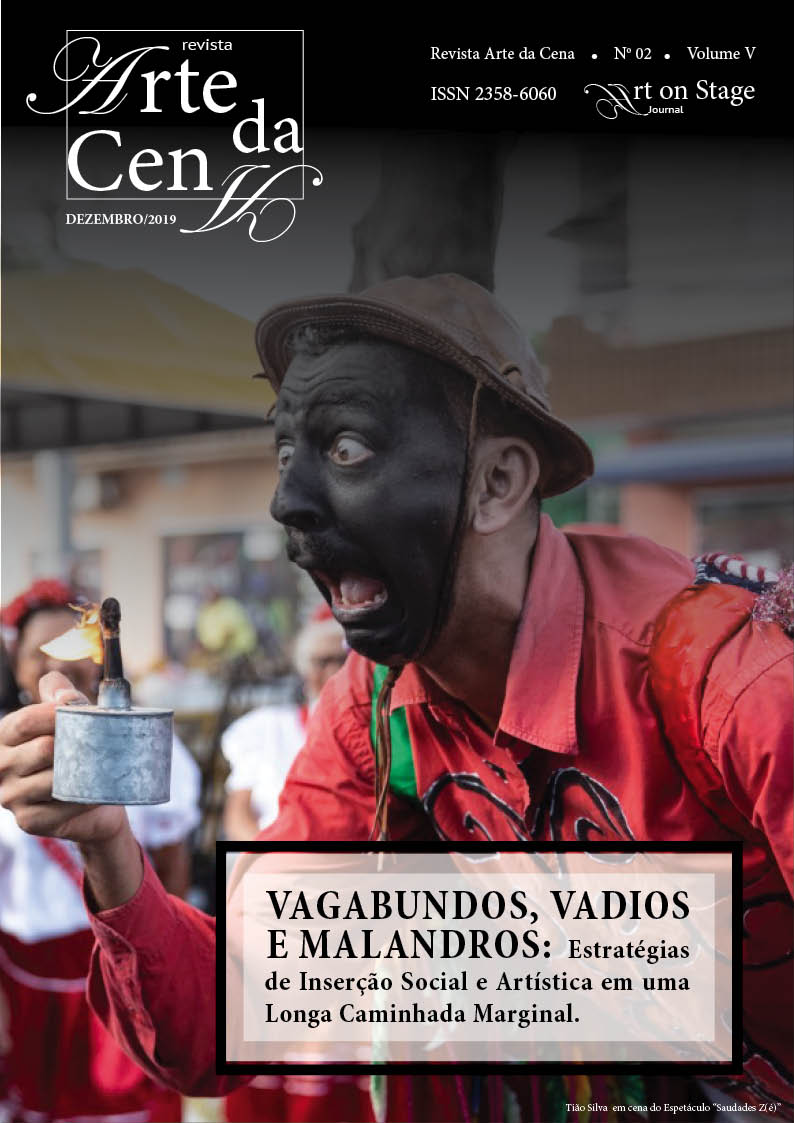Vol. 5 No. 2 (2019): VAGABONDS, ROVERS AND ROGUES: Strategies of Social and Artistic Insertion on a Long Marginal Path

This issue will discuss and promote reflections on the “malandro” type – the Brazilian Portuguese word for a social and cultural concept similar to a “rogue” –, by perceiving approaching strategies and attempts of social belonging, which theatre actors and actresses’ had resorted through history, as unsubmissive modes of action and other meanings of belongingness. Artists of multiple talents, the jongleurs wandered through festivals and fairs in the Middle Ages. Playwrights, bearers and interpreters of songs and legends played an important cultural role when transiting from aristocratic to popular venues by merging the sacred with the profane and by propagating other ideas and forms of expression inside and outside borders. The professionalization of these artists was the outcome of a long-term process on their vagrant condition. Since the drug trade had decreased, charlatans began to commercialize their comic scenes performed with masks and fixed character types. Hence, the comic type of the “malandro” (rogue) had integrated acting repertoires, since its engagement to artists´ strategies of insertion on the straight and established society opposed a senseless and errant world. Considering the poignancy of this debate in theatre studies, the Art on Stage Journal (Revista Arte da Cena) dedicates a dossier to this theme and welcomes articles from artists (and) researchers who has been poetizing and debating these issues. In this way, articles that aims to identify elements to challenge our certainties and our latent prejudice regarding certain rejected and marginalized traditions might be of interest. The path is amidst the undignified personifications of some amoral poetics such as the hermetic symbols of “pelintras” (kind of trickster) and rovers who are both able to grant citzenship to the obscure areas of our creative power in the art scene.


